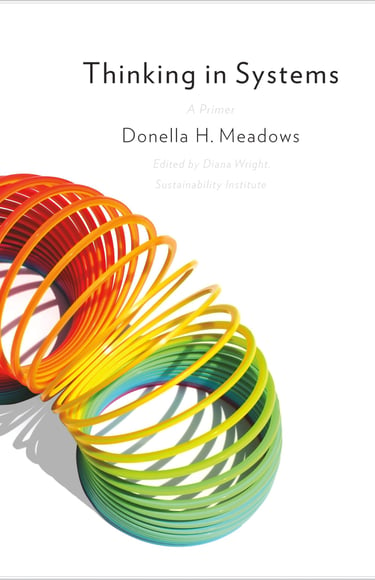Thinking in Systems: A Primer
Everything is connected, and if you want to fix something, you must look at the whole picture, not just bits and pieces.
BOOKSSYSTEMS
6/13/20252 min read


Donella H. Meadows' "Thinking in Systems: A Primer" is a foundational text that introduces the principles of systems thinking, offering a powerful lens through which to understand the complex interconnectedness of the world around us. The book moves beyond simplistic cause-and-effect relationships to explore how the structure of a system dictates its behavior over time.
At its core, Meadows defines a system as an interconnected set of elements that is coherently organized in a way that achieves something. These elements can be tangible (like people or trees) or intangible (like information or social norms). The key to understanding a system lies in identifying its:
Elements: The individual parts that make up the system.
Interconnections: The relationships and feedback loops that link the elements.
Function or Purpose: The overall behavior or goal that the system achieves, which is often deduced from its behavior rather than its stated objectives.
A central concept in the book is the role of stocks and flows. Stocks are the elements that accumulate or deplete over time (e.g., water in a bathtub, money in a bank account, population size). Flows are the rates of change in a stock (e.g., water entering or leaving the bathtub, income and expenses, births and deaths). Understanding the dynamics of stocks and flows is crucial for grasping how systems behave.
Feedback loops are another critical concept. These occur when a change in a stock influences the inflows or outflows related to that stock. Meadows identifies two main types:
Balancing feedback loops: These loops seek equilibrium or a target state, resisting change (like a thermostat regulating temperature).
Reinforcing feedback loops: These loops amplify change in a system, leading to exponential growth or decline (like a snowball rolling downhill or a vicious cycle of poverty).
Meadows emphasizes that the behavior of a system is an emergent property of its structure, meaning it arises from the interactions of its parts, not just the sum of the parts in isolation. She illustrates how focusing solely on individual events or elements can lead to ineffective interventions and unintended consequences.
The book also explores common system traps – recurring structures that produce problematic behavior (like the tragedy of the commons or addiction) – and leverage points – places within a system where a small shift can lead to significant changes in behavior. Meadows argues that the most effective leverage points are often the least obvious, residing in the system's goals, its ability to self-organize, and even the paradigms or mental models that underpin it.
Ultimately, "Thinking in Systems" is a call to a more nuanced and holistic way of seeing the world. Meadows encourages readers to:
Shift their focus from events to patterns and structures.
Recognize the interconnectedness of seemingly disparate issues.
Be aware of their own mental models and biases when analyzing systems.
Approach interventions with humility, recognizing the inherent uncertainty and complexity of systems.
Prioritize resilience, self-organization, and hierarchy in designing and managing systems for long-term well-being.
Through clear explanations, relatable examples, and insightful observations, Donella Meadows provides readers with the fundamental tools and perspective needed to understand and interact more effectively with the complex systems that shape our lives and the world.